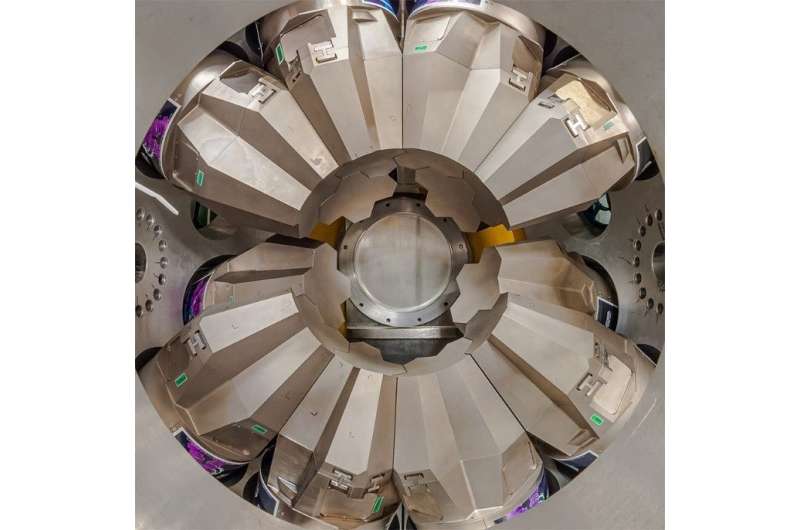The Daily Observer London Desk: Reporter- John Furner

An atomic nucleus assumes discrete energy levels when added energy excites that nucleus. These energy levels are the nucleus’ unique fingerprint; no two nuclei have identical energy patterns. For exotic nuclei, which have unbalanced numbers of protons and neutrons and often only exist for a fraction of a second, researchers have devised a variety of methods to measure the energies of their excited levels.
Researchers recently found unusual levels that formed when a beam of calcium-38 traveling at 30 percent of the speed of light collided with a beryllium-9 target. The calcium-38 nuclei lost a substantial amount of energy in the encounter.
The researchers traced the unusual excited levels formed in calcium-38 back to the simultaneous excitation of several protons and neutrons. The energies of such complex states are sensitive probes for nuclear theory. They are difficult to observe in reactions typically performed at high beam energies at particle accelerators.
Thus, such dissipative scattering reactions are a new tool in the arsenal of nuclear researchers who study and model nuclei. In the future, researchers can use these kinds of reactions to study unusual energy levels in many other short-lived nuclei to probe nuclear theory, for example, at the Facility for Rare Isotope Beams.
Researchers found a novel pathway leading to the formation of complex excited states in rare isotopes. They performed the experiment at the National Superconducting Cyclotron Laboratory, a cyclotron-based particle accelerator at Michigan State University formerly operated as a National Science Foundation user facility. These excited states appear to involve the rearrangement of multiple nucleons, formed in a single, highly energetic projectile-target collision.
The energies of such states are sensitive benchmarks for shell-model calculations that straddle large model spaces. For the rare isotope calcium-38, the researchers observed the population of such energy levels via in-beam γ-ray spectroscopy with GRETINA.
This followed after inelastic scattering in which the calcium-38 incoming beam interacted with a beryllium-9 target at more than 30 percent of the speed of light. The incoming calcium-38 beam surprisingly lost more than 200 million electronvolts in energy. These tell-tale complex-structure states previously have been out of reach in the typically high-luminosity fast-beam experiments without such high energy loss. They most often elude observation in low-energy reactions, which require far higher beam intensities.
This work was performed by a collaboration of experimentalists and theorists from Michigan State University, the University of Washington in St. Louis, Argonne National Laboratory, and the University of Surrey in the United Kingdom. The related research was published in Physical Review Letters and Physical Review C.



